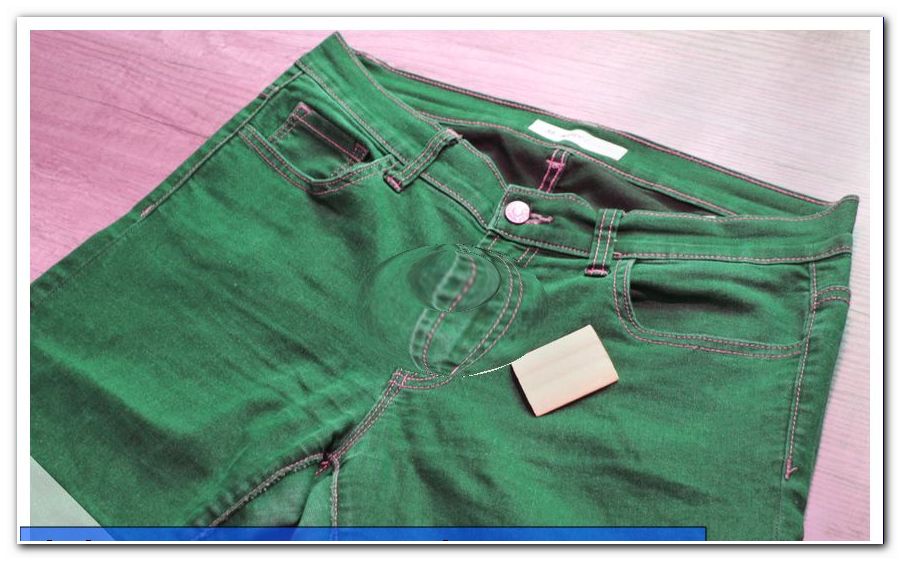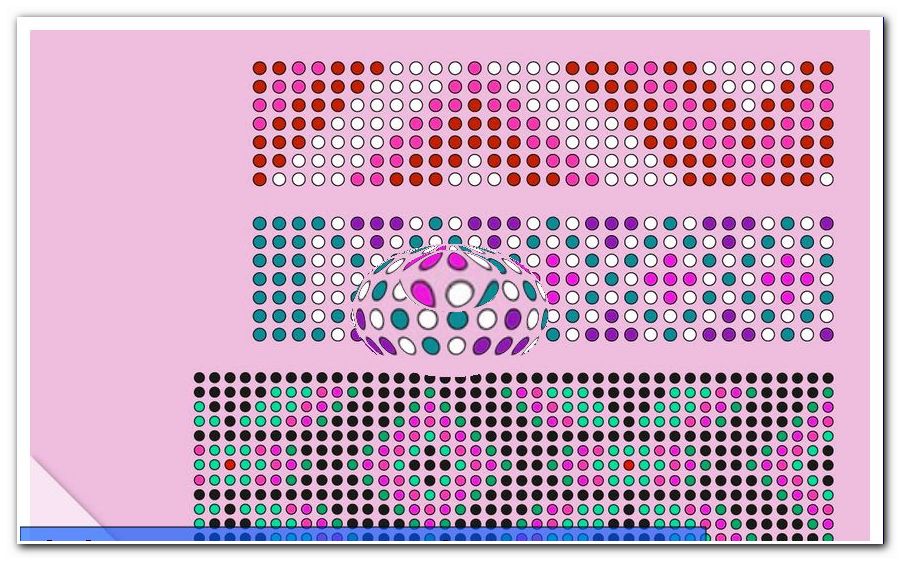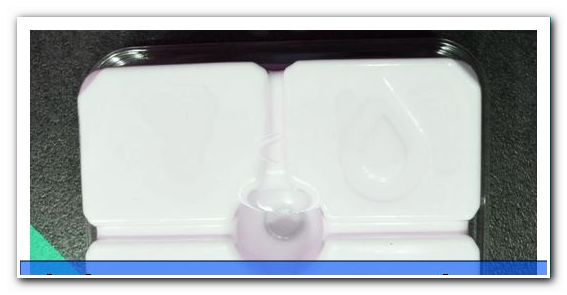Timber stand construction - pros / cons and all costs

- Pros and cons - wooden stand construction
- advantages
- disadvantage
- The cost of a house in wooden stand construction
- Save costs
- Tips for quick readers
Modern building with traditional building material - wood is the most traditional building material of all. Long before people made their houses out of bricks or even fired bricks, the wooden house was the normal type of building. Even today, building with wood is widespread. Wood offers many advantages, but also some disadvantages compared to other building materials. We inform you in this article about the wooden stand construction, their advantages and disadvantages, as well as the costs.
Wooden house is not the same wooden house
The term "wooden house" can mean many different types of houses. There are log cabins that consist of stacked solid logs. There are wooden houses in which a truss provides the load-bearing structure, but the interstices are walled up. Finally, there are the wooden houses in stand construction. These also have an internal supporting structure made of solid wood beams, which is complemented by a formwork and insulation. In this article, only the houses that are built in this wooden stand construction are treated. In the North American continent, this type of construction is dominant in the market for single and multi-family houses. In Europe, timber-framed houses are in sharp competition with massively built houses made from mineral building materials.
Pros and cons - wooden stand construction
advantages
Houses in timber stand construction have the following advantages:
Inexpensive in purchase
Houses in wooden stand construction consist of wooden beams, chipboard and insulating material. This makes them much cheaper from the cost of materials than brick or concrete houses. In addition, an exterior wall in timber frame construction has already integrated the insulation, while this masonry house still has to be additionally attached outside.
Simple and fast in construction
In the US, wooden houses are often made on site. In Germany, the wooden house is usually prefabricated in the factory and brought in modules to the site. Depending on the design, these modules are already plastered, provided with windows and have already laid the electrical and sanitary pipes. Everything has to be put together at the construction site.

Elimination of drying times
A solid house has a high moisture in all building materials, which must first diffuse out before it can be further built or purchased. The moisture sits in the concrete, in the screed, in the interior plaster or in the mortar. A wooden house in a stand construction method is ready for occupation after erection. Therefore, the double burden of loan repayment and rent falls away much earlier at the client, as in a brick house.
High share of personal contribution possible
Most manufacturers of wooden houses offer their products in turnkey or expansion construction. In the construction of the construction, the builder can do many jobs themselves.
Very good thermal insulation
Wood is the only material that has both good static and thermal insulation properties. Therefore, the wooden beams in a stud work also do not form thermal bridges, but contribute to thermal protection. Equipped with insulating material between the rafters, houses in timber frame construction are well insulated.
Very large individual configurability
Every element of a wooden house carries itself, as it were. Wood can be put under pressure as well as on trains. This gives the architect and the client many opportunities to individually design a wooden house in a stand construction without increasing the costs exponentially. This is especially true for the window surfaces: The load-bearing structure of the wooden stands allows very large open areas. This makes houses in wooden stand construction often very bright and flooded with light.
disadvantage
The disadvantages of the wooden house in stand construction are:
Low static load capacity
Stand-up houses are limited in height compared to masonry or concrete buildings. A maximum of three floors are possible, with the top floor can only be designed as a loft. On the subject of "earthquake protection", the ghosts of a wooden house in a stand construction are divided: on the one hand, it can only absorb considerably less external forces than a solid house. On the other hand, a wooden house reacts elastically in the event of an earthquake and can compensate for earthquakes by resonating. In massive storms, such as tornadoes, houses in stand construction are far inferior to the massive buildings.
Low sound insulation
At this point, manufacturers of frame houses have made tremendous progress. Although this construction is still clairaudient in comparison to the solid construction. Thicker layers of plaster and denser insulation and chipboard, however, made much to increase the sound insulation. This makes wooden houses in frame construction today in densely populated areas with high traffic and operational habitable.

Limited shelf life
Wood works to a greater extent than brick or concrete walls do. However, manufacturers have significantly improved their products in terms of durability. If prefabricated houses from the 1950s and 1960s were demolished after 25-30 years at the latest, the manufacturers now indicate that they have a lifespan of 100 years for their houses. Whether this is true, has yet to show. Nevertheless, wooden houses are made of an organic building material that tends to decompose. Thorough control of all potential weak points is still mandatory in a frame-built wooden house.
Fire danger
Where flammable materials are, it has a breaking fire easier than where they are missing. Although the wood in houses in stand construction is impregnated ex works, this flame retardant only has an inhibiting effect. However, in most cases, a successfully extinguished wooden house is no longer useful and must be demolished. Basically, however, wooden houses are not more endangered by fire than masonry houses. This is also reflected in the insurance policies: Thanks to modern flame-retardant materials and innovations in the construction of the walls, houses in frame construction are classified by the fire insurance as well as brick buildings.
Overall, the manufacturers are still struggling with many prejudices and resentment against the wooden houses in frame construction. Gradually, however, these cheap and fast alternatives to the brick house are accepted.
The cost of a house in wooden stand construction
Houses in timber frame construction are usually constructed from the upper edge of the basement ceiling / floor slab. The basement itself is usually still bricked or concreted. Since the question of the basement must be asked for both the solid house and the wooden house, the costs are identical. The completeness can be expected for a used as storage and building technology cellar with about 400 € per m², for a built-up as a living basement with about 800 € per m².
The actual cost per square meter for a timber frame house is difficult to pin down. There are big differences in quality and price among manufacturers. If you are really ready to compromise and only looking for a house for yourself, you can already buy a wooden house for less than 20, 000 euros. In addition to the framework, these houses are boarded and insulated in winter. For the fulfillment of your own dream of the house that can be enough. In general, however, these solutions are only sold as "holiday homes" whose admissibility should be checked in a residential area prior to construction.
Overall, one can expect from about 30-50% lower construction costs compared to a solid construction. A single-storey wooden house in frame construction is available from about 90, 000 euros. The pendant made of solid construction costs about 120, 000 euros. However, the prices and the quality vary greatly depending on the manufacturer, so that this information can be given only with reservations. It should be remembered, however, that in the case of the wooden house alone, the 150 euros per square meter for the order of the thermal insulation are eliminated, as they are needed in the solid house.

Wooden houses in frame construction usually have a chipboard as outer cladding in Europe. The US-typical construction with overlapping wooden boards is still very rare to find here. This means that the outer wall still has to be clad in some way so that the wooden house becomes visually representative. For that there are different possibilities:
wood facade
To equip a wooden house also optically with a wooden facade is only consistent. It is also reasonably priced at € 50 per square meter. Visually, the organic-harmonic structures of a wooden facade are very pleasant to look at.
aluminum facade
Aluminum facades are still relatively rare in private housing. What used to be realized with solid aluminum panels is today produced with aluminum composite panels. These have only a thin layer of aluminum on the outside and a plastic core. In durability and weather protection, the aluminum composite panels are unbeatable. They also provide a variety of colors and textures particularly interesting visual accents. The prices for aluminum composite panels start at about 50 euros per square meter, but this is added to the cost of mounting materials and labor costs by the specialist company.
Verklinkern
The Verklinkern is suitable for homeowners who, although the benefits of a wooden house want to make it appear optically but like a solid house. Basically, the Verklinkern a wooden house is not necessarily advised, because this makes it possible to detect fouling or pest infestation early. A masonry layer of weatherproof clinker gives the wooden house but an additional protection against the weather and wind pressure. Also, so that the disadvantage of the sound sensitivity can be significantly reduced again.

The cost of Verklinkern are less in the material than in the execution. A brick stone costs only 50 cents. For a square meter you need about 50-70 stones, depending on which format is chosen. However, clinker work is reserved for trained and experienced masons. It is the supreme discipline in the walls, so self-attempts in this work should be avoided. With labor costs, the price for a clinkered facade rises to about 90 euros per square meter.
plaster
The quickest and easiest way to make his wooden house weatherproof and visually appealing, is the application of a plaster. Again, you should hire the specialist company, as precise knowledge and much practice are necessary to achieve a good result. Including scaffolding, material and labor costs, the price per square meter when plastering is around 80 euros.
Save costs
Own contribution can help save
The possibilities of own contribution are limited with a facade. The only way to make the facade itself is to attach a simple wooden facade to a wooden house. This must then be weatherproof sealed. The annual inspection of the wooden facade is then one of the duties of the homeowner.
For all other types of facade construction, the homeowner can save some money by building the scaffolding. A plastered wall must also be painted subsequently. This can also be done in-house. Most of the work that can be done by the homeowner in a house in a stand construction, lies inside: boarding the walls, filling the joints, laying of electrical and sanitary pipes or bringing all wall and floor coverings can save up to 50% of total construction costs.
Good advice for saving energy: the blower-door test
Wooden houses in frame construction are only as good as their execution. Badly adapted modules with gaps and spaces can quickly turn a low-energy house into a money-shredding house. Therefore, a blower-door test should be performed immediately after construction. In this approximately two-hour procedure, the house is hermetically sealed and put under pressure. It controls whether and how much pressure escapes to the outside. If the pressure loss exceeds a limit, the house must be checked for leakage. This is for example a smoker, who can find a leak by means of smoke. At just 220-350 euros for a blower door test should not be saved at this post. The leaks are often completely invisible: sockets and light switches are often weak points in wooden houses with frame construction. Here are planning or execution mistakes have been made, which can be claimed.
Tips for quick readers
- Wooden houses in frame construction are today no worse than solid houses.
- Soundproofing can be improved by latching.
- The stand construction allows larger windows.
- Wooden houses in stand construction are quickly constructed and ready for occupancy immediately after construction.
- In the interior of wooden houses there are many possibilities of own contribution.
- A blower-door test provides certainty in the tightness in the building.




